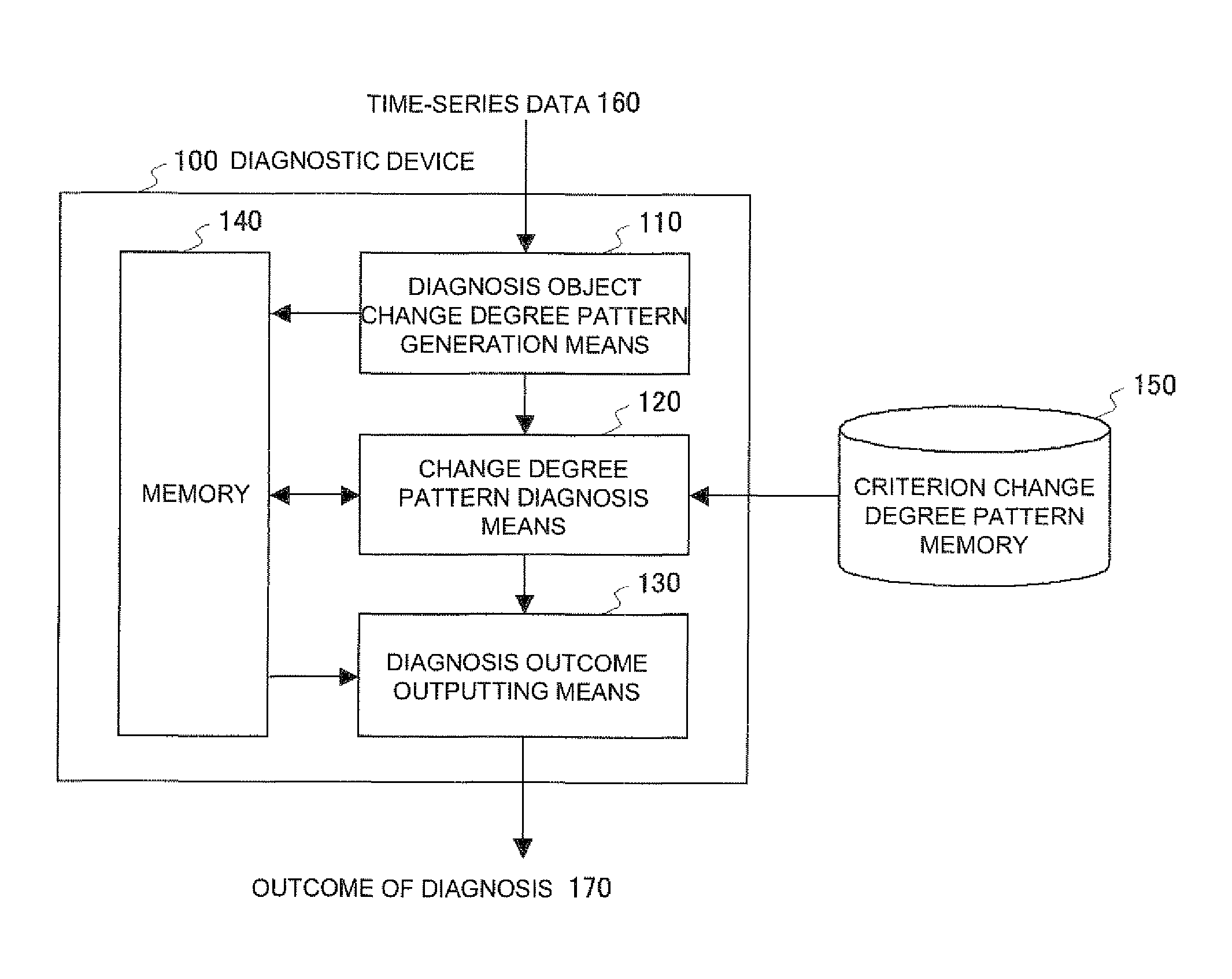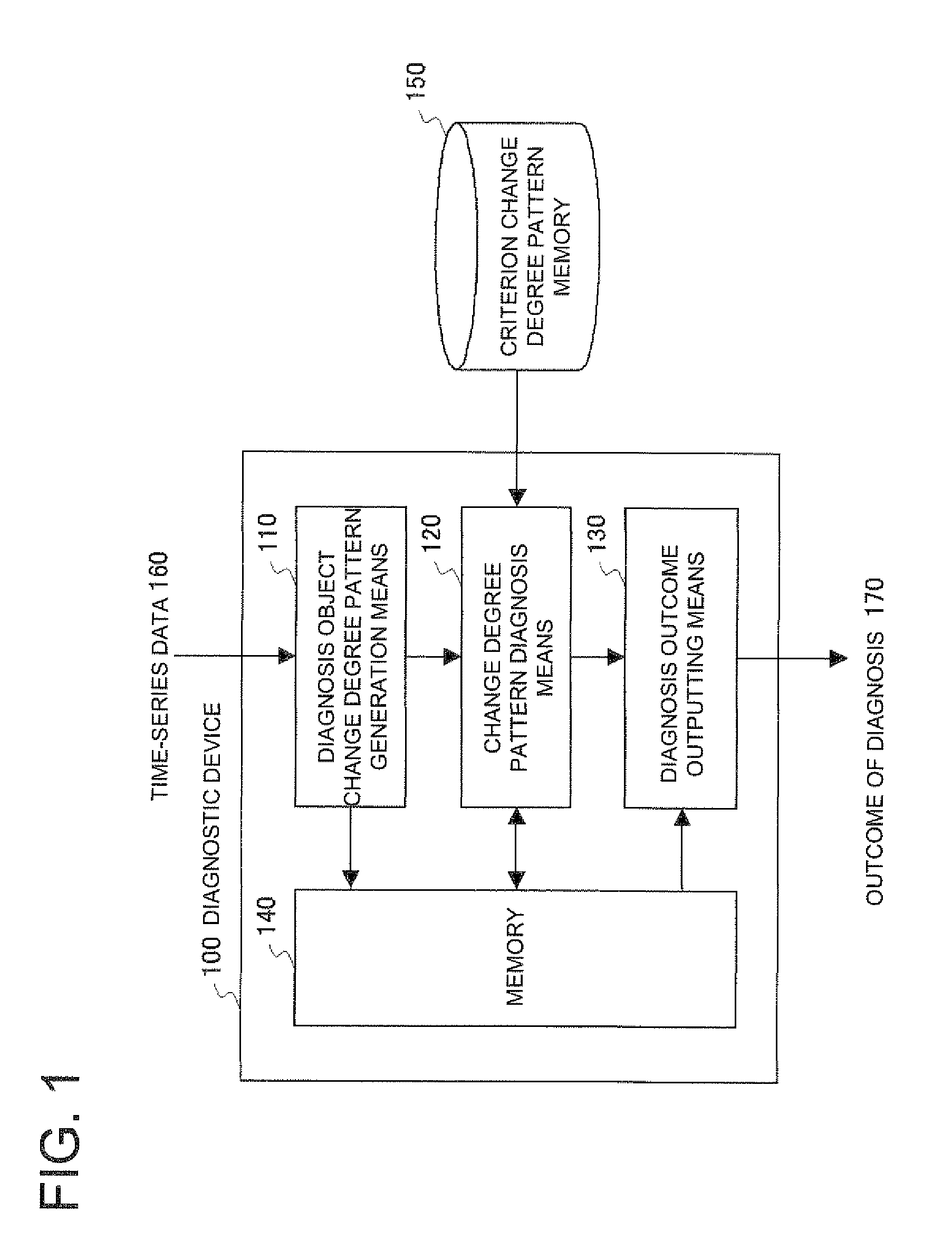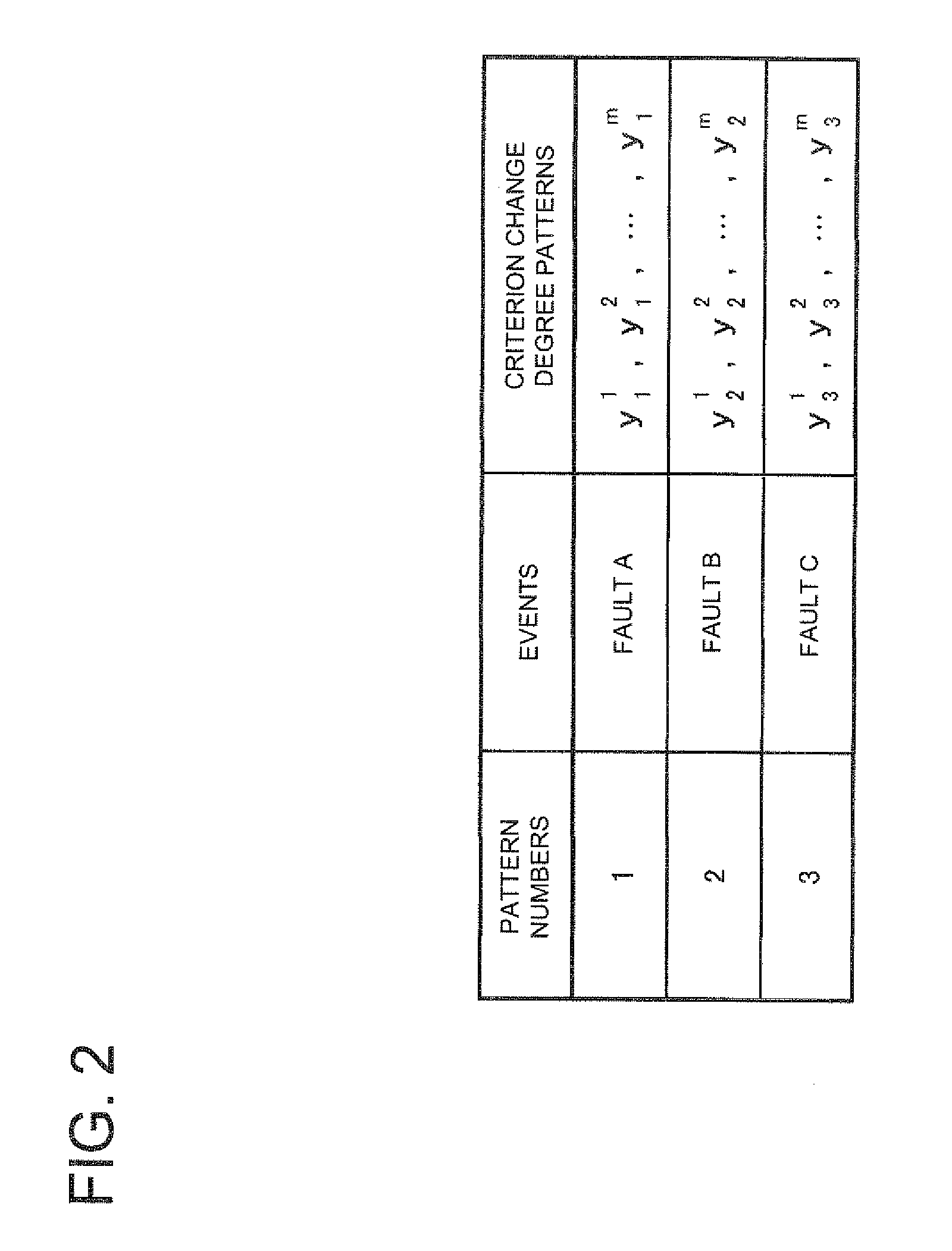Diagnostic device
a diagnostic device and a technology for diagnosing devices, applied in the direction of instruments, testing/monitoring control systems, nuclear elements, etc., can solve problems such as misdetection, conventional diagnostic devices suffer, and conventional diagnostic devices suffer
- Summary
- Abstract
- Description
- Claims
- Application Information
AI Technical Summary
Benefits of technology
Problems solved by technology
Method used
Image
Examples
first exemplary embodiment
[0089]Referring to FIG. 1, a diagnostic device 100 according to a first exemplary embodiment of the present invention includes a diagnostic object change degree pattern generation unit 110, a change degree pattern diagnosis unit 120, a diagnosis outcome outputting unit 130 and a memory 140. A criterion change degree pattern memory 150 is connected to the diagnostic device 100. The diagnostic device 100 inputs a time-series data 160, including a plurality of attributes, as measured from an object being diagnosed, not shown. The diagnostic device compares a diagnostic object change degree pattern, generated from the time-series data 160, to a plurality of criterion change degree patterns, stored in the criterion change degree pattern memory 150, to detect the occurrence of a fault in the object being diagnosed. The diagnostic device also estimates the cause of the fault that has occurred to output an outcome of diagnosis 170.
[0090]With the number m of the attributes contained in the t...
second exemplary embodiment
[0120]Referring to FIG. 7, a diagnostic device 200 of a second exemplary embodiment of the present invention differs from the diagnostic device 100 of the first exemplary embodiment shown in FIG. 1 as to a change degree pattern diagnosis unit 210 provided in place of the change degree pattern diagnosis unit 120, and as to an attribute cardinality degree memory 220 connected to the device.
[0121]Referring to FIG. 8, the degree of cardinality of each attribute in the diagnosis of an event-to-be-diagnosed is stored in the attribute cardinality degree memory 220 in association with the event. In the example of FIG. 8, the degree of cardinality w11 of an attribute 1, the degree of cardinality w12 of an attribute 2, . . . , the degree of cardinality w1m of an attribute m are held in store. The degree of cardinality may be discrete values, such as a value 1 indicating cardinality or a value of 0, indicating non-cardinality, or a real number value specifying the degree of cardinality in more...
third exemplary embodiment
[0130]Referring to FIG. 9, there is shown a diagnostic device 300 according to a third exemplary embodiment of the present invention. This diagnostic device differs from the diagnostic device 200 of the second exemplary embodiment shown in FIG. 7 in including a change degree pattern diagnosis unit 310 in place of the change degree pattern diagnosis unit 210 and in including a layered criterion change degree pattern memory 320 in place of the criterion change degree pattern memory 150.
[0131]Data of a layered structure of a plurality of events as the subjects for diagnosis and a plurality of layer-based criterion change degree patterns are stored in the layered criterion change degree pattern memory 320. An example of such data is shown in FIG. 10. In this example, the data is in two layers, namely a first layer that detects a fault and a second layer that estimates the cause of the fault detected. The layered criterion change degree pattern memory holds in store one or more criterion...
PUM
 Login to View More
Login to View More Abstract
Description
Claims
Application Information
 Login to View More
Login to View More - R&D
- Intellectual Property
- Life Sciences
- Materials
- Tech Scout
- Unparalleled Data Quality
- Higher Quality Content
- 60% Fewer Hallucinations
Browse by: Latest US Patents, China's latest patents, Technical Efficacy Thesaurus, Application Domain, Technology Topic, Popular Technical Reports.
© 2025 PatSnap. All rights reserved.Legal|Privacy policy|Modern Slavery Act Transparency Statement|Sitemap|About US| Contact US: help@patsnap.com



